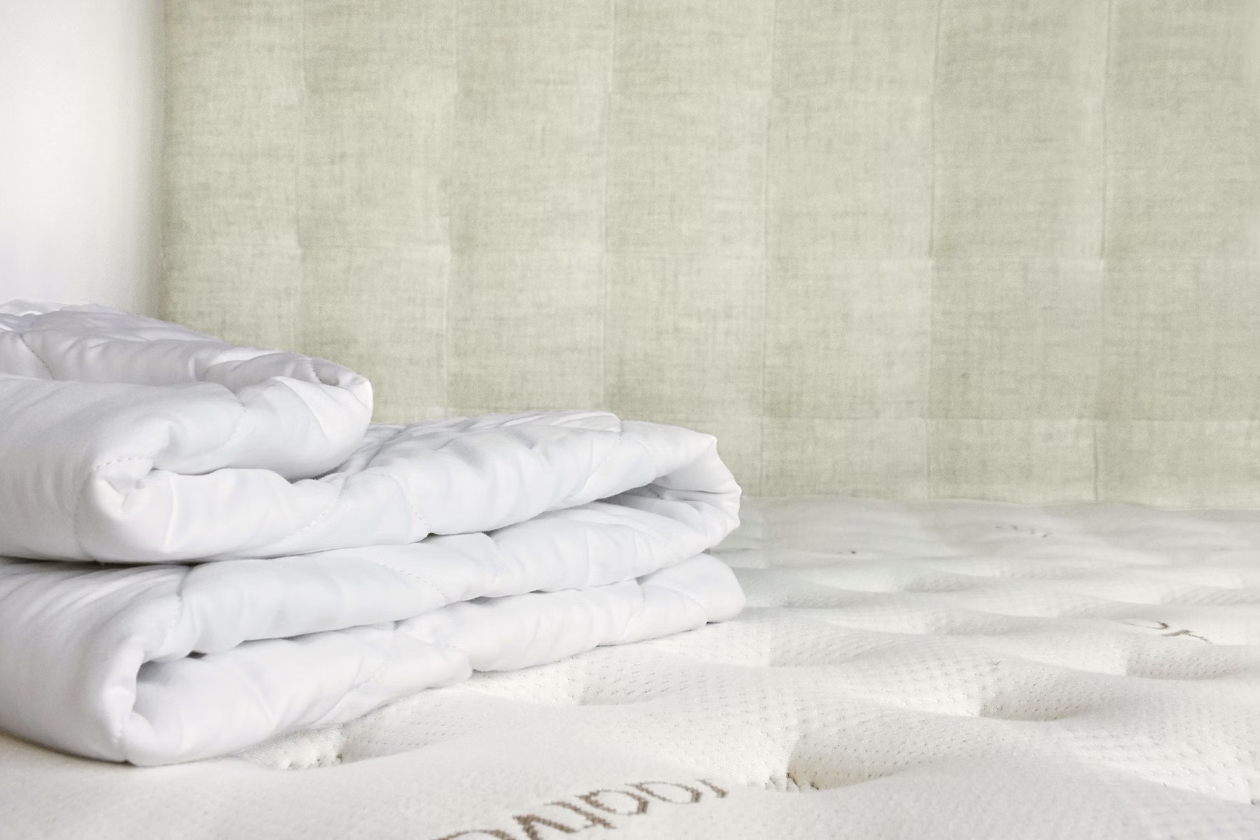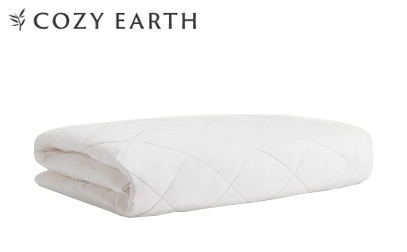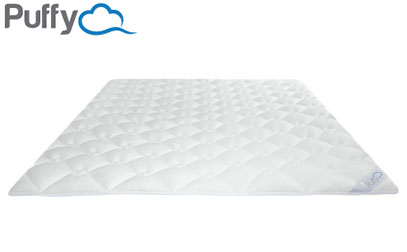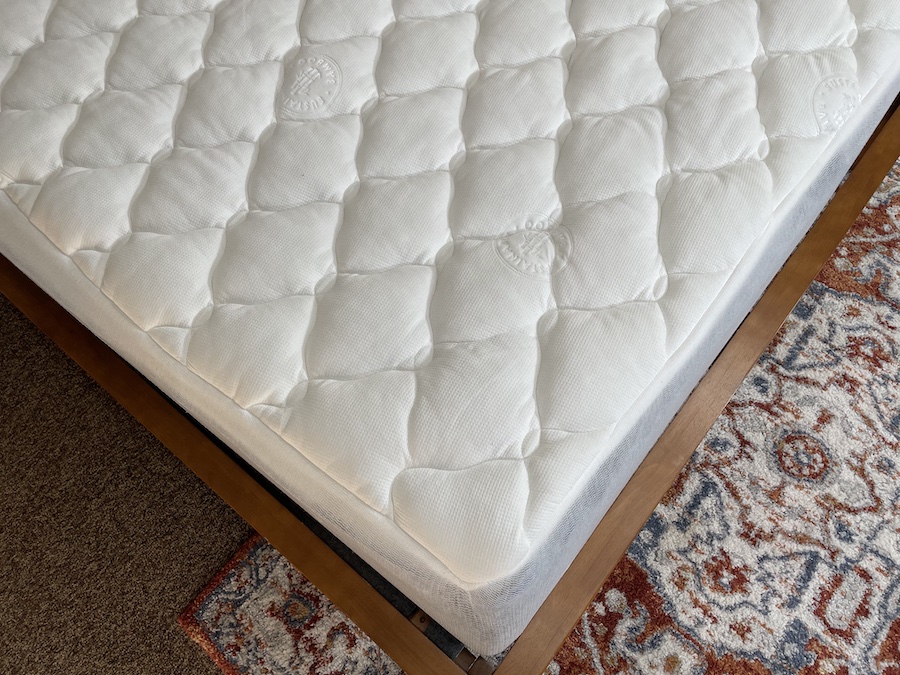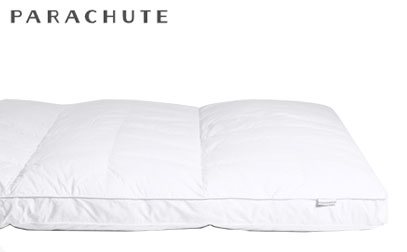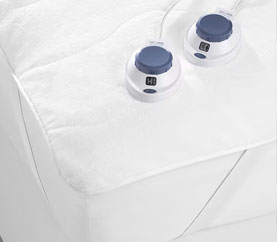Purchasing a mattress pad is an effective way to improve your quality of sleep without spending a fortune.
Not only could one of the best mattress pads adjust the feel of your bed to provide additional comfort and support, but it should also protect your mattress from dust, allergens, stains, and other contaminants that can shorten its lifespan.
A mattress pad is a layer of cushiony material placed on top of your mattress and underneath your sheets. Mattress pads come in a variety of materials, including cotton, polyester, and down alternative. There are also many great hypoallergenic choices on today’s market for those with allergies. Pads are thinner than mattress toppers but normally run thicker than protectors, so they work as a great middle-ground option for consumers.
In this review guide, we’ll share our top 6 picks for this year’s best mattress pads for your bedding.
Best Mattress Pads
- Saatva Organic Mattress Pad – Best Organic Mattress Pad
- Cozy Earth Bamboo Mattress Pad -Best Bamboo Mattress Pad
- Puffy Mattress Pad – Best Cooling Mattress Pad
- Helix Plush Mattress Topper – Best Plush Mattress Pad
- Parachute Home Down Mattress Topper – Best Down Mattress Pad
- Sleep Number Warming Layer – Best Heated Mattress Pad
Sleep Advisor’s Testing Methodology
At Sleep Advisor, our product reviews are based on findings from in-person tests that allow us to have a genuine understanding of how the product feels and performs. We pull our information from a database of over 100 tested mattresses and sleep accessories.
For this roundup, we prioritized features that are especially important for mattress pads. We paid special attention to components such as topper thickness, support elements, motion transfer, and cooling features.
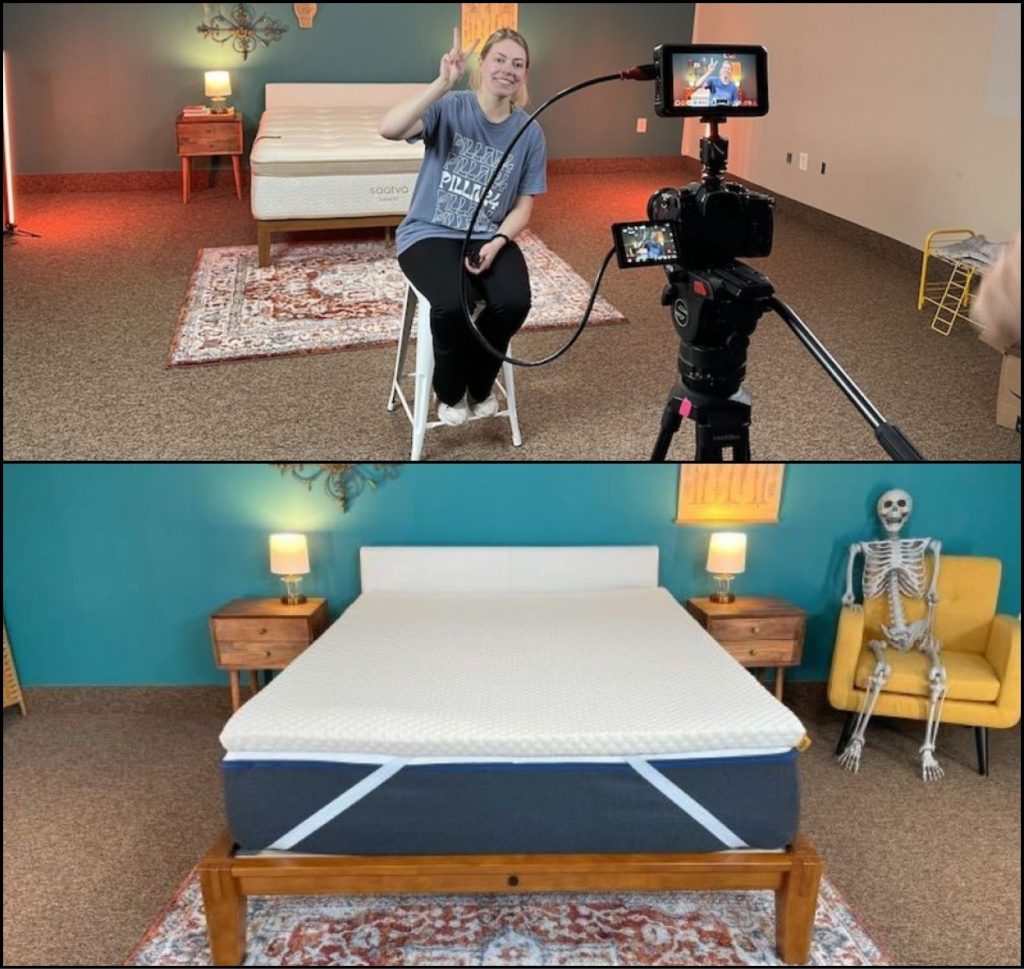
Best Mattress Pads
Saatva Organic Mattress Pad – Best Organic Mattress Pad
Saatva Organic Mattress Pad
This organic mattress pad is made from hypoallergenic cotton and spandex for breathability. It features an elastic band for easy and secure use.
This Saatva mattress pad is one of the best choices for those looking for an organic pad. The Saatva Organic Mattress Pad is diamond-quilted plush layers that add comfort and protection to your mattress. The pad comes in nine sizes and fits mattresses up to 16 inches tall.
This one is made from GOTS-certified organic cotton, so it’s chemical-free and safe for people with allergies. The pad’s 300-thread count cotton adds coolness and comfort to any mattress, regardless of the type. Plus, the side panels are woven with 4 percent spandex, featuring a silicone elastic band for added security.
Cozy Earth Bamboo Mattress Pad -Best Bamboo Mattress Pad
Cozy Earth Bamboo Mattress Pad
The Cozy Earth Bamboo mattress pad is a cooling, moisture-wicking mattress pad that will keep your mattress clean and protected. Perfect for sleepers looking for that extra comfort for their mattress.
Cozy Earth Score
4.90 / 5
If you’re looking to add extra comfort to your bed space while staying cool, you should consider bamboo. This material is naturally adept at cooling, which is ideal if you wake up hot and sweaty in the middle of the night.
The Cozy Earth Bamboo Mattress Pad is made from 100 percent bamboo viscose to promote both comfort and temperature regulation. The company also implemented design enhancements to ensure a perfect fit with most mattresses. First, the pad comes with a 360-degree elastic hem to provide a secure fit. Second, this pad is made to fit over mattresses up to 20 inches high.
Puffy Mattress Pad – Best Cooling Mattress Pad
Puffy Mattress Pad
The Puffy Mattress Pad is a hypoallergenic mattress pad designed to keep you cool at night. It’s Oeko-Tex 100 certified, making it chemical-free and safe for all sleepers.
Puffy Score
4.50 / 5
The Puffy Mattress Pad is designed to deliver cooling comfort all year round. The pad is made with highly breathable fabric to prevent hot flashes and overheating. Plus, it’s hypoallergenic and resists bacteria build-up, benefitting those with allergies.
The pad features bamboo fabric that’s naturally cooling and brea6000thable, which should help hot sleepers sleep better. In addition, the bamboo fabric is organic and easy to maintain as it doesn’t collect dust, mites, mold, or mildew. Puffy also offers a 101-night trial for sleepers to test the pad before purchasing it.
Helix Plush Mattress Topper – Best Plush Mattress Pad
Helix Plush Mattress Topper
The Helix Plush mattress topper adds a thin layer of plushness and quilting to the top of a mattress. It doesn’t dramatically change the firmness or feel but does add a bit of luxury.
Helix Score
4.40 / 5
Read Full ReviewThe Helix Plush Mattress Topper features Revoloft™ Cluster fiberfill for a long-lasting shape and a comfortable feeling. The bamboo fibers are soft to the touch but still more resilient than cotton, allowing the pad to return to its original shape.
This mattress pad is hypoallergenic and breathable, so it’s a good choice for people struggling with allergies. In addition, it’s safe to use on sensitive skin since there’s less chance of bacteria build-up, even with frequent use. The pad comes in six standard mattress sizes and has extra-deep pockets to fit a wide range of beds. The needle baffle box stitching traps the fill inside, ensuring that the fiberfill doesn’t gather in single areas of the pad.
Parachute Home Down Mattress Topper – Best Down Mattress Pad
Parachute Down Mattress Topper
An all-natural white down mattress topper for an extra plush layer.
Parachute Score
4.30 / 5
A down mattress pad is an easy way to transform your bed from super firm to feeling like a cloud. If that sounds like something you need, Parachute has you covered with its Down Mattress Topper.
This three-inch mattress pad is filled with European white down and feather fill, the perfect combination for luxuriously soft sleep. It’s encased in a 100% cotton cover for added breathability. The dual-chamber baffle box construction ensures there’s no unwanted shifting or clumping.
Sleep Number Warming Layer – Best Heated Mattress Pad
Sleep Number Warming Layer
With temperature-balancing properties and ActiveAir Technology, the Sleep Number Warming Layer provides cozy warmth to your bed. The pad’s adjustable controls for each side make this a great choice for couples.
If you wake up with your teeth chattering, the Sleep Number Warming Layer could be the ideal solution to your chilly bed. This warming pad uses ultrafine wires and soft microfleece to keep you comfortable all night long. Couples who like different temperatures when they sleep will appreciate that the Warming Layer has adjustable warmth controls from both sides of the bed.
It is made completely of polyester and can be machine-washed and tumble-dried. The heating elements are classified as non-hazardous low voltage, meaning they are safe even if they get wet. This mattress pad also cuts off after 10 hours, so you don’t have to worry about forgetting to turn it off.
What to Look For in a Mattress Pad
Materials
Cotton
Cotton is a natural material, so it’s more expensive than synthetics. There are organic and non-organic choices, and many products offer a blend of cotton with other types of fabrics. The best thing about cotton is its durability, but let’s not forget its mechanical properties and wet strength. Cotton has excellent resistance even when wet, and it does a good job of retaining its shape.
Wool
Wool, whether it’s organic or non-organic, offers a more natural sleep surface, and it’s great for temperature control. This material is a champ when it comes to insulating when temperatures are chillier, and it also has excellent moisture-wicking abilities. Most wool products are machine washable, but we recommend checking the label first. Now, if you’re worried about the price, yes, wool can be pricier. However, the material is likely to last a long time, so we’d say it’s a worthy investment.
Feather
Feathers are often found in pillows due to their cloud-like comfort, adjustability, and optimal breathability, which helps you stay cool. Their function in pads is largely similar. Naturally sourced feathers are often expensive, but many feather alternatives aim to mimic the feel without harming the bird or triggering allergies.
Memory Foam
Memory foam is commonly found in mattresses but has also been used in other sleep products, including pads. One of its best aspects is that it becomes more malleable as it heats up and slowly conforms to your shape to maximize pressure relief. Modern memory foams often incorporate heat-conducting materials to help prevent heat retention and are typically covered in breathable fabrics.
Latex
Though it offers slightly less conformance, Latex’s response time makes it easier to move around on, and the material is naturally cool. Latex is also highly durable, though often more expensive. Dunlop tends to be more natural, somewhat more dense, and less consistent. Though Talalay is processed using more chemicals, the result is a springier and lighter sleep experience.
Other Fibers
Other materials found in pads include polyester, rayon, viscose, microfiber, or other synthetics processed from polymers. While synthetics are less sustainable, a product that is at least partially poly-based does have some advantages. For instance, these usually are less prone to wrinkling, can hold up through washings, and are more easily designed to be hypoallergenic than some of their more all-natural alternatives.
Sleep Position
Back and combination sleepers tend to sleep best on medium-firm mattresses. For combination sleepers, medium-firm beds are more versatile for multiple sleep positions, and for back sleepers, this feel is often best for both support and pressure relief. Therefore, if these sleepers have a firm bed, a softer mattress pad may help provide a more medium-firm overall feel.
Stomach sleepers need a firmer surface to keep their hips elevated, which is why they might want to steer toward firm toppers instead. Side sleepers could benefit from a softer mattress pad because these help relieve pressure around their hips and shoulders.
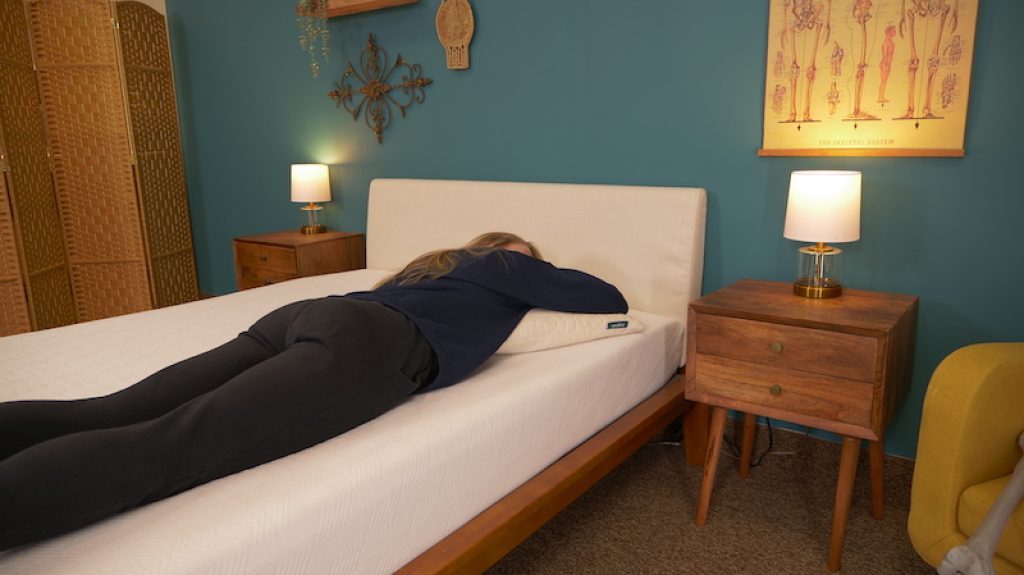
Firmness
A mattress pad might not be thick enough to alter the firmness of your mattress. It can change the feel to some extent, but if you don’t like the firmness of your mattress, we suggest you look at toppers instead.
Thickness
Mattress pads lack sufficient thickness, so again, it’s best you look at toppers if you want to add a few inches to your bed. Compared to a topper, a mattress pad will provide less cushioning and support because of its thinner profile.
Pressure Relief
If you ever wake up with sore shoulders, knees, or hips, this might just be due to pressure buildup. Pressure can build up around the shoulders, neck, lower back, and hips throughout the night, which can cause you to wake up with aches and pains. Memory foam is the way to go here, as it cradles your body and adds pressure-relieving properties to your mattress.
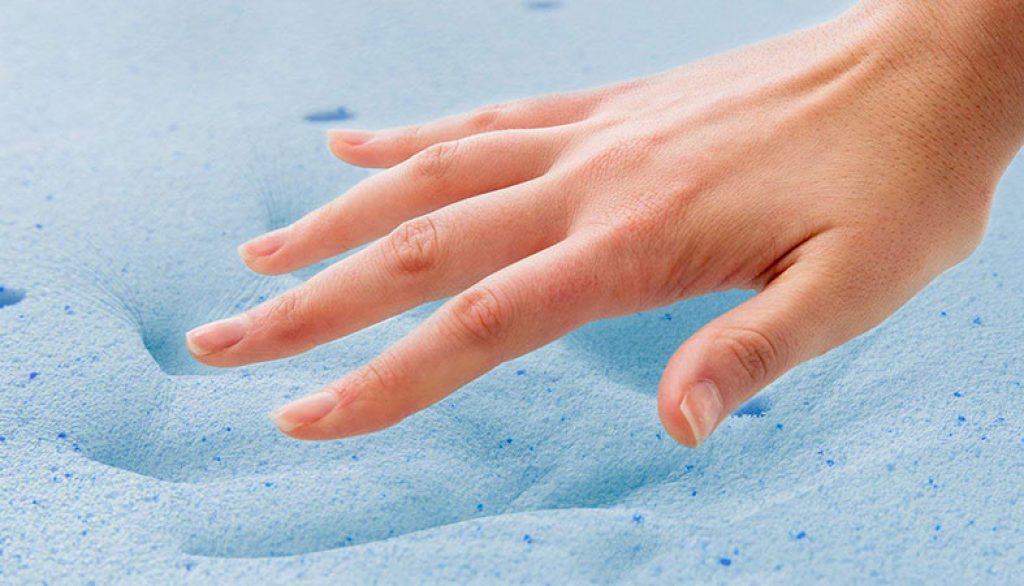
In addition to simply gaging how a mattress and pad feels when we lie on it, we also use a pressure map to see just how much buildup there is. If the reading shows red and orange, we know that there is pressure building up around that area. Whereas, if the outline of our bodies are surrounded by blue and green readings, we know that there is likely not going to be buildup for that bodytype and sleep position.
Cooling
Take note of what materials are used in each mattress pad and how conducive they are to airflow. Breathable materials will let hot air escape. If you’re a particularly hot sleeper, you might want some extra cooling features like phase-change technology to help keep the temperature at a comfortable level.
We usually use a temperature gun to take the bed’s inital temperature. Then, after lying on it for five minutes, we measure again to see just how much it heats up (or not). After that, we measure it once more after lying on it for another five minutes. This process allows us to have a handle on how much a bed heats up and how quickly it cools down.
Explore our top picks for the best cooling mattress pads.
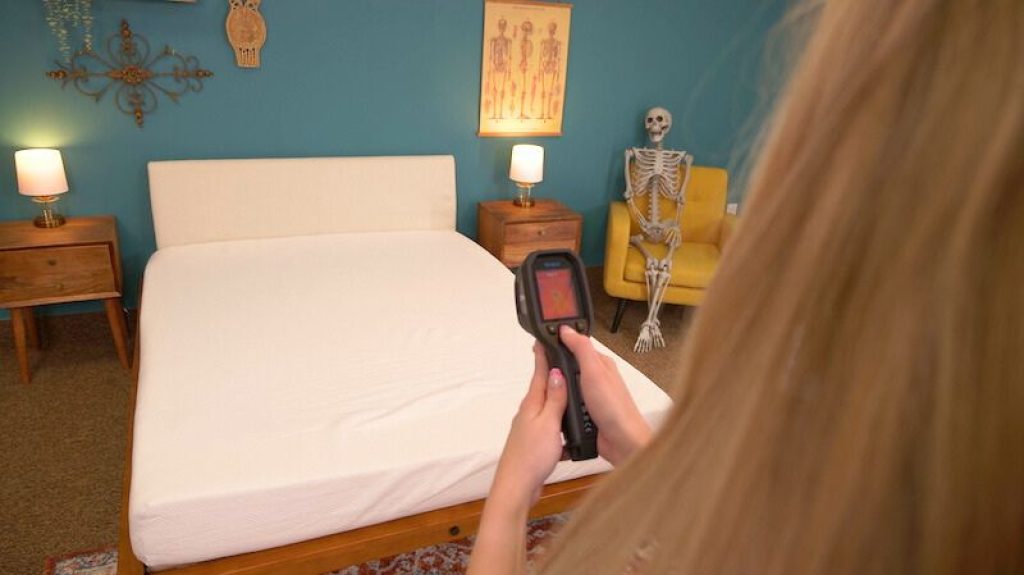
Durability
Durability can influence how long your mattress pad lasts. Generally, mattress pads and toppers last between 3-5 years, though a product made with poor-quality materials that aren’t very durable could shorten this lifespan.
Unfortunately, we can’t test a mattress’s durability over a longer period of time. However, we do look at the overall quality of materials and construction to determine how well we think that mattress will hold up over the years.
Related: Best Mattresses That Don’t Sag
Edge Support
If your bed noticeably sags when you sit or sleep on the edge, it lacks edge support. If you want to add some support to your mattress, consider a firm mattress pad or even a topper. Toppers are more likely to improve the edges of your bed because pads are too thin for that. Mattress pads typically do little to improve edge support, but we still test this feature by sitting and lying near the edge of the bed when the mattress pad is on.
Motion Isolation
If your partner’s nocturnal movements wake you up, you will likely appreciate the motion-isolating capabilities of a mattress pad made from memory foam. A memory foam pad may absorb the motion created by your sleeping partner and allow you to sleep undisturbed.
However, significantly light sleepers who wake up easily will probably prefer a mattress topper for motion isolation. Toppers are thicker and, as such, better at isolating motion. We test this by using a seismograph app, where high spikes mean lots of of motion transfer and smaller spikes mean less motion transfer.
Sex
A latex mattress pad may make the movements and repositioning associated with sex better for couples. Latex is a bouncy and responsive material that quickly snaps back to shape, preventing couples from feeling stuck in the mattress.
Budget
Mattress pads can be a budget-friendly way to change the feel of your bed because they are considerably less expensive than a mattress. There are mattress pads in many different price ranges. Plus, you may be able to score more savings if you shop during major holiday sales.
Trial & Warranty
If you’re shopping online for a mattress pad, it’s a good idea to ensure that there’s a trial and warranty available for the product. These will likely be shorter than sleep trials and warranties for mattresses, but they can give you peace of mind to ensure the pad is a good fit for your needs.
Mattress & Sheet Compatibility
Your mattress pad should correspond with your bed size. If your pad is too small or too large, it likely won’t secure to your bed properly, and this may cause it to shift around throughout the night.
Additionally, if you’re using fitted sheets, you want to make sure the pockets are deep enough to cover both the mattress and the pad.
Benefits of a Mattress Pad
- Mattress protection – A great mattress pad can help protect your mattress from damage in the event of accidents or spills.
- Added plushness – Adding a pad may give your mattress a slight upgrade in plushness, which may be all that stands in the way between you and the perfect amount of pressure relief.
- Extend mattress use – A mattress pad can help extend the life of your mattress.
- A cheaper alternative – Mattress pads are considerably less expensive than a new mattress, providing a great way to improve your bed space on a budget.
Difference Between a Mattress Pad vs. Mattress Topper vs. Mattress Protector
Many people may use these terms interchangeably, but subtle differences in design and intent can help you tell them apart.
What is a mattress pad?
If your purchase is less than an inch thick and only intended to provide a subtle comfort shift while also protecting your mattress, you’re probably looking at a mattress pad. The thinner material can protect your mattress from most damage, but that is not its sole purpose. These products are rarely waterproof but often quite breathable.
What is a mattress topper?
A product that is more than 1 inch thick and provides an additional comfort layer that changes the feel of your bed is likely a mattress topper. These lay right on top of the bed, and some have elastic placement straps to secure them. The materials are sometimes covered in fabric, but in many cases, they are not. For additional information, read our page about differentiating between a mattress pad vs mattress topper.
What is a mattress protector?
Protectors are often even thinner than mattress pads, and some wrap around the entirety of the mattress. Their sole purpose is to provide a tight layer of protection between the mattress and the outside world. They are often equipped to shield the bed from higher volumes of liquid from spills and provide a resistant surface to most allergens. These rarely change the feel of the bed, though. For more, see our article on how to tell the difference between a mattress pad vs. protector.
Best Mattress Pad FAQs
How do you wash a mattress pad?
How you’ll wash a mattress pad depends on your exact pad. In most cases, you’ll get specific instructions from the manufacturer, which we advise you to follow. A heated electric mattress pad is meant for spot-cleaning only, which is best done with a damp cloth and mild soap to avoid getting it too wet. Pads safe to wash in a washing machine are arguably easier to clean, but again, avoid harsh chemicals and high heat.
How often should you wash your mattress pad?
How often you’ll wash your mattress pad is up to you. However, a good rule of thumb is to wash it at least once or twice a month if you’re a hot sleeper. If you typically don’t sweat at night, washing your mattress pad once or twice every two months is okay.
What is the best material for mattress pads?
Most people prefer memory foam, latex, down, and down alternatives. Which one you choose is entirely up to you, but make sure to consider your needs and preferences and what you want from your mattress pad. For covers, we’d suggest looking at natural material like cotton for its hypoallergenic properties and breathability.
How many inches of a mattress pad is best?
Mattress pads are typically under one inch thick, whereas toppers are 2 to 4 inches. Which thickness would work the best for you is up to you to decide based on your preferred sleeping position and body weight. Also, do you want to alter the feel of your mattress? If so, it’s best to go for the thickest mattress topper regardless of whether you want to go the soft or firm route.
Do mattress pads provide support?
Some mattress pads can provide additional support to your mattress, depending on the type you get. If you are looking for a more supportive pad, check out those made from memory foam or latex. That said, if you need more substantial support, it’s best to go with a topper or an entirely new mattress.
Are mattress pads waterproof?
Mattress pads are not typically waterproof. Products marketed as mattress protectors are far more likely to provide protection from severe spills, such as urine or dumped drinks on a mattress. If these are concerns of yours, you may want to invest in a protector. For more info, check out our guide for the best waterproof crib mattress pads.
Are mattress pads thick or thin?
That depends on your definition of thick and thin, but generally, pads are thinner than 1 inch. Some are significantly thinner, and other choices are called “overstuffed” because they achieve a higher loft with additional fill. If you’re looking for something thicker, you may want to look at mattress toppers.
What’s the difference between a mattress topper and a mattress pad?
Mattress toppers are often thicker and intended to noticeably change the feel of your mattress to a firmer or softer feel. On the other hand, mattress pads are often thinner, so they provide less of a change in feel. However, they’re also ideal for protecting your mattress against any contaminants.
Our Final Thoughts
Mattress pads can help modify the feel of your mattress and provide additional protection for your bed space. This will come in handy if you have purchased a bed that may be too soft or too firm for your sleep position or body type. Given that they cost considerably less than a mattress, mattress pads are also a cost-effective way to add life to your mattress.

Jill Zwarensteyn
Senior Editor
About Author
Jill Zwarensteyn is the senior editor for Sleep Advisor and a certified sleep science coach. She is enthusiastic about providing helpful and engaging information on all things sleep and wellness.
Combination Sleeper
Education & Credentials
- Certified Sleep Science Coach
